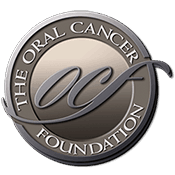Predictors of survival in mucosal melanoma of the head and neck.
Source:MedScape.com Jethanamest D; Vila PM; Sikora AG; Morris LG Department of Otolaryngology-Head and Neck Surgery, New York University School of Medicine, New York, NY, USA. BACKGROUND: The head and neck is the most common site of mucosal melanoma, a cancer with poor prognosis. In contrast to cutaneous melanoma, mucosal melanoma of the head and neck (MMHN) is uncommon, with limited data regarding outcomes and prognostic factors drawn from small, single-institution case series. In order to identify factors predictive of survival, we analyzed MMHN outcomes in a large US cohort. METHODS: MMHN cases (n = 815) diagnosed in the USA between 1973 and 2007 were analyzed in the Surveillance, Epidemiology, and End Results registry, and cause of death was individually determined in 778 (95.5%) cases. Kaplan-Meier survival analysis and Cox proportional hazards regression were used to analyze prognostic variables. RESULTS: Disease-specific survival status was determined in 778 (95.5%) cases. The 5- and 10-year rates of overall survival (OS) were 25.2 and 12.2%; disease-specific survival (DSS), 32.4 and 19.3%. On multivariable analysis, anatomic primary site was an independent predictor of OS and DSS, with tumors in the nasal cavity and oral cavity associated with survival superior to tumors in the nasopharynx and paranasal sinuses. Age > 70 years, tumor size, nodal status, and distant metastasis status were additional independent predictors of poorer survival. CONCLUSIONS: In this large cohort of patients with MMHN, we have identified several novel factors robustly predictive of overall and melanoma-specific survival. This news story was resourced by the Oral Cancer Foundation, and [...]
